Canon SX50 Review Part 1: A reprisal of articles I wrote on dpreview.com in November/December 2012
Prologue: After photographing with Canon's Powershot SX40 superzoom camera during 2012, Canon upgraded it to the more powerful SX50 towards the end of the year. The SX50 had about a dozen new features I thought would be very useful, so I purchased one. On dpreview.com where I contribute under the name VisionLight, many readers inquired about those new features to help them decide about upgrading. Since I had both cameras, I set about creating a series of articles addressing their questions. The articles are still on the dpreview.com site, but due to a procedural error I made a couple of years ago, the supporting images were lost. Regularly over the years since, members have asked if I could in some way reprise the full articles with those images intact. Answering these requests has now become the first blog entry on my website. In many ways, it is a way to say Thank You to the dpreview.com readers that support my website with visits every day. I hope everyone enjoys the chance to revisit this discussion on a camera that remains extremely popular even today.
Note that clicking on a Review image will open it in a Picture Gallery where some may be downloaded. Only test images are downloadable while pictorial images, which are copyrighted, are not. The caption of each image in the Picture Gallery will include a link back to this Article.
For Christmas in 2012, I combined all the articles into a very lengthy publication on dpreview.com to aid all readers who found a new SX50 under their Christmas tree. To make it easier to read here, this Blog will revert to the individual article format with updated text from the combined article. Here is Part 1:
First, I appreciate all your support for this project as well as your contributions to the discussions. Together we learned much about this versatile little camera. I now have mine set up to do just about everything I ask of it. Here's hoping this compilation will be helpful to new owners, and possibly generate new discussions of capabilities we may not have even tried yet. Here are the original articles (sometimes slightly edited per replies in the original discussions):
SX50 Review Part 1: Initial Observations, SX50 vs SX40, and Images:
With Super Storm Sandy and no power or communications for a week, followed by a Nor'easter and a half a foot of snow, I have not had a lot of time to play with my new SX50. But after two weeks of owning it, I have now taken about 100 images and can start my mini-review. (Note: all data and images are based on using mostly Tv mode, some Av mode and some P mode for flash. I have not tried AUTO. BUT, I may be expanding my horizons and (gulp) trying AUTO mode in the future. Even us old dogs can learn new tricks, so stay tuned for a possible thread on my observations.)
Initial Observations:
I'm going to have to get used to the new button placements. With the SX40 I've learned to hit all buttons without taking my eye from the EVF. What I do like on the SX50 is that the picture review button is placed away from the right back edge of the camera. Many times while placing the camera in its bag, I've accidently hit that button and turned the camera on. The switch between the ISO and self timer buttons is going to take a while since I use both often. The switch of the zoom assist button will also take a while, moving from my right thumb to my left thumb. I actually liked that button's placement on the SX40. But I'm also going to have to relearn how to hold the camera since my left thumb now naturally falls across the two zoom assist buttons. I have already hit them a couple of times by mistake. Now one thing I do not like is the new larger raised dots on the right thumb rest (15 higher larger dots on the SX50 vs 18 smaller dots on the SX40). I find the new layout uncomfortable and actually distracting. Otherwise, the new camera handles just like its older sister and is very familiar in my hands. I've even set the EC at a default of -1/3, just like the SX40.
SX50 vs SX40 Telephoto Images Side by Side:
In my SX40 mini-review 11 months ago, I displayed comparison pictures of a cupola on my friends property. Although she moved south and no longer owns the property, the new owner is also neighborly. So it's back to the cupola, which you'll see has been somewhat damaged by Super Storm Sandy. The comparative images were tripod mounted with IS left on for both cameras. Both are set at evaluative metering and all settings equalized between the cameras as close as possible, except that the SX50 is Superfine. Both compositions were also matched as closely as possible at 840mm and around 500mm. For most practical purposes, the images from both cameras are nearly the same. I'll get more into the Superfine in a moment, but some of you may see the slight difference here.
SX50_490mm SUPERFINE - Tripod mounted SX50 from 100 feet at around 500mm:
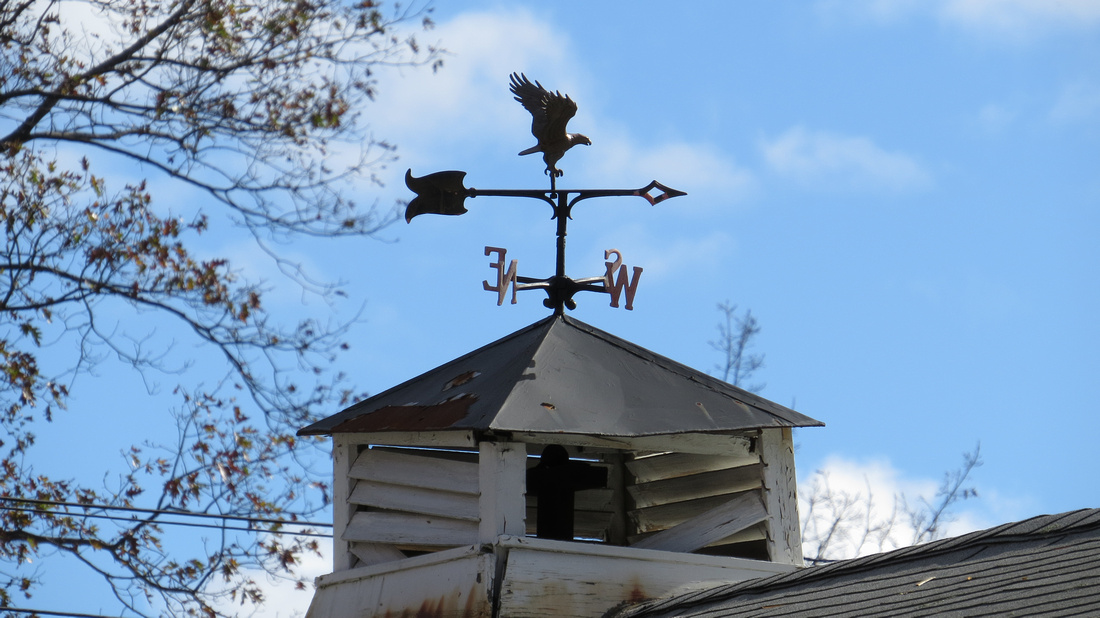 07_SX50_0035 490mm SUPERFINETo return to the SX50 Review - Part 1, click the link
07_SX50_0035 490mm SUPERFINETo return to the SX50 Review - Part 1, click the link
SX40_485mm FINE - Tripod mounted SX40 from 100 feet at around 500mm:
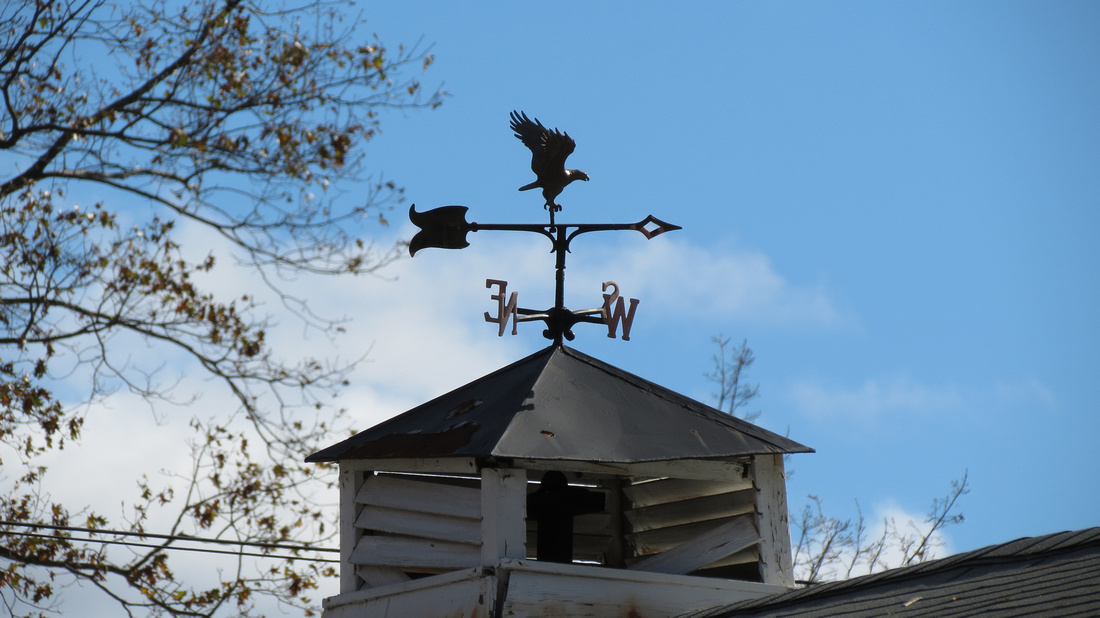 08_SX40_1335 485mm FINETo return to the SX50 Review - Part 1, click the link
08_SX40_1335 485mm FINETo return to the SX50 Review - Part 1, click the link
SX50_772mm SUPERFINE - Tripod mounted SX50 from 100 feet at around maximum optical zoom of SX40:
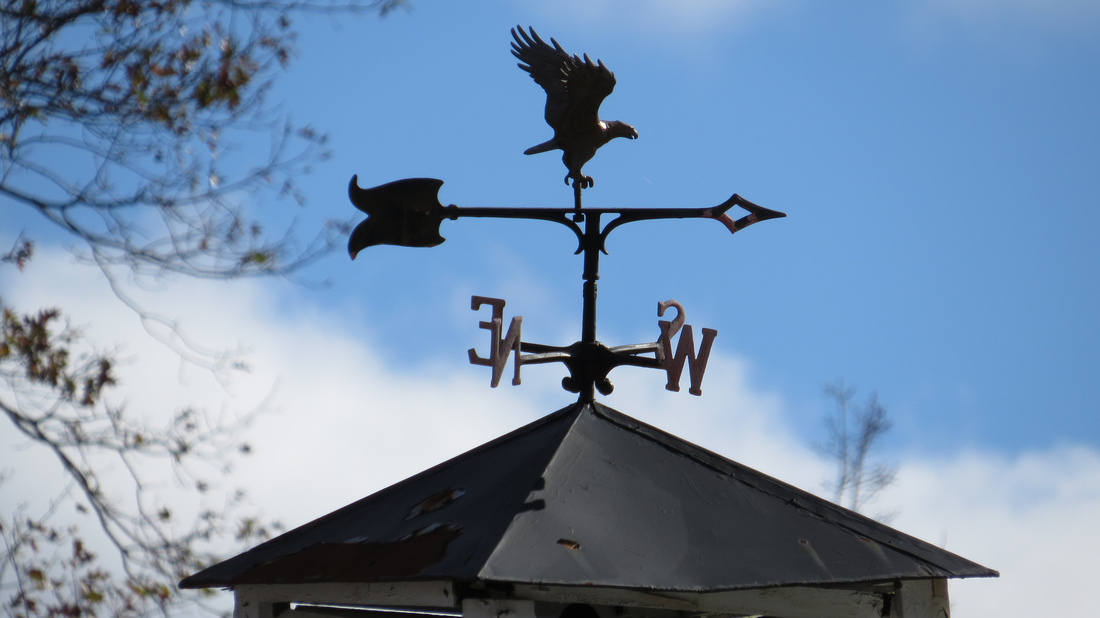 05_SX50_0033 772mm SUPERFINETo return to the SX50 Review - Part 1, click the link
05_SX50_0033 772mm SUPERFINETo return to the SX50 Review - Part 1, click the link
SX40_840mm FINE - Tripod mounted SX40 from 100 feet at maximum optical zoom of 840mm:
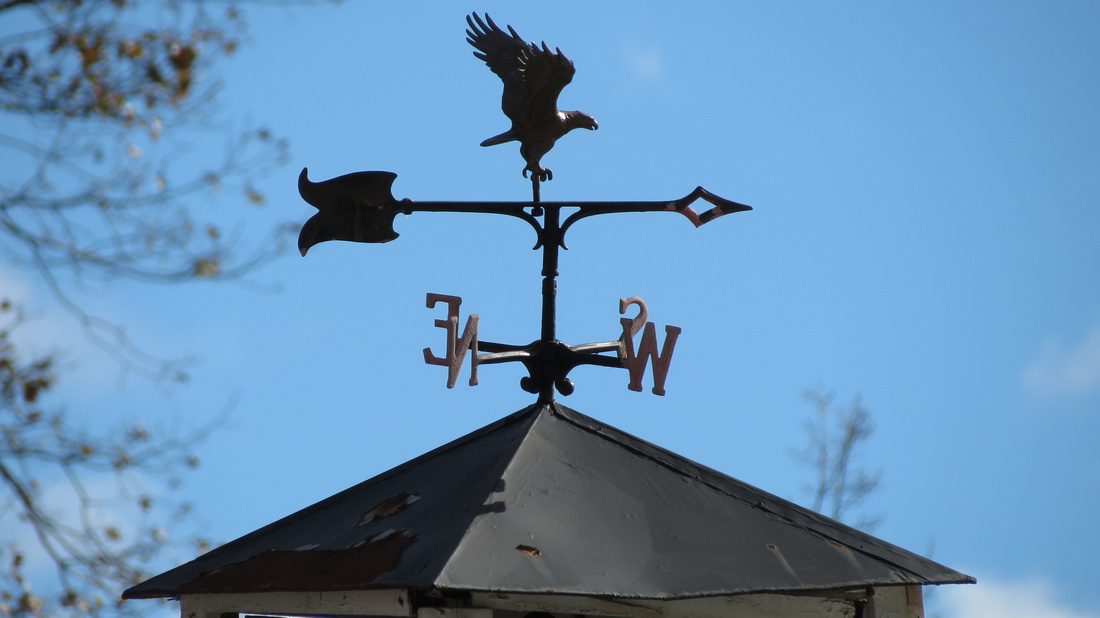 06_SX40_1334 840mm FINETo return to the SX50 Review - Part 1, click the link
06_SX40_1334 840mm FINETo return to the SX50 Review - Part 1, click the link
SX50 Superfine vs Fine:
Here are two comparisons for your judgment, one at 2400mm using 2.0TC and one at 1200mm. For general viewing, again they look pretty much the same. But in this case, doing a little pixel peeping, superfine does in deed carry the day. In the bright light of these examples I do not really see the increased noise (at least in the blue channel) that I've heard about. This of course bears further testing, especially in the green channel where noise may be more apparent. But so far, I do like Superfine and since its memory footprint doesn't bother me, I've set it as the default on my SX50.
SX50_1200mm FINE - Tripod mounted from 100 feet :
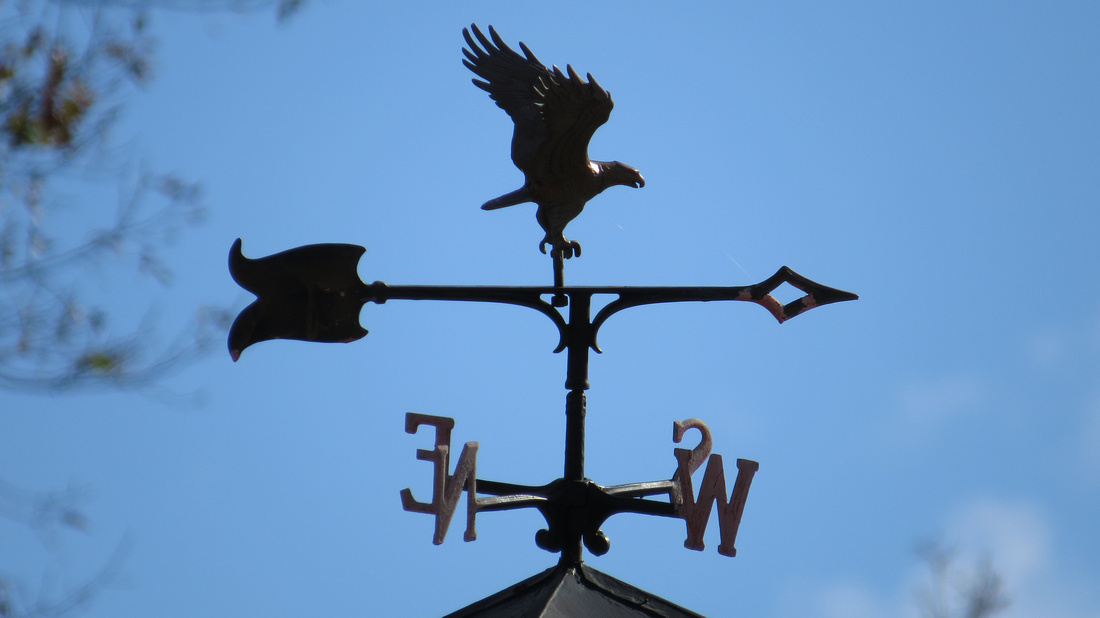 04_SX50_0029 1200mm FINETo return to the SX50 Review - Part 1, click the link
04_SX50_0029 1200mm FINETo return to the SX50 Review - Part 1, click the link
SX50_1200mm SUPERFINE - Tripod mounted from 100 feet:
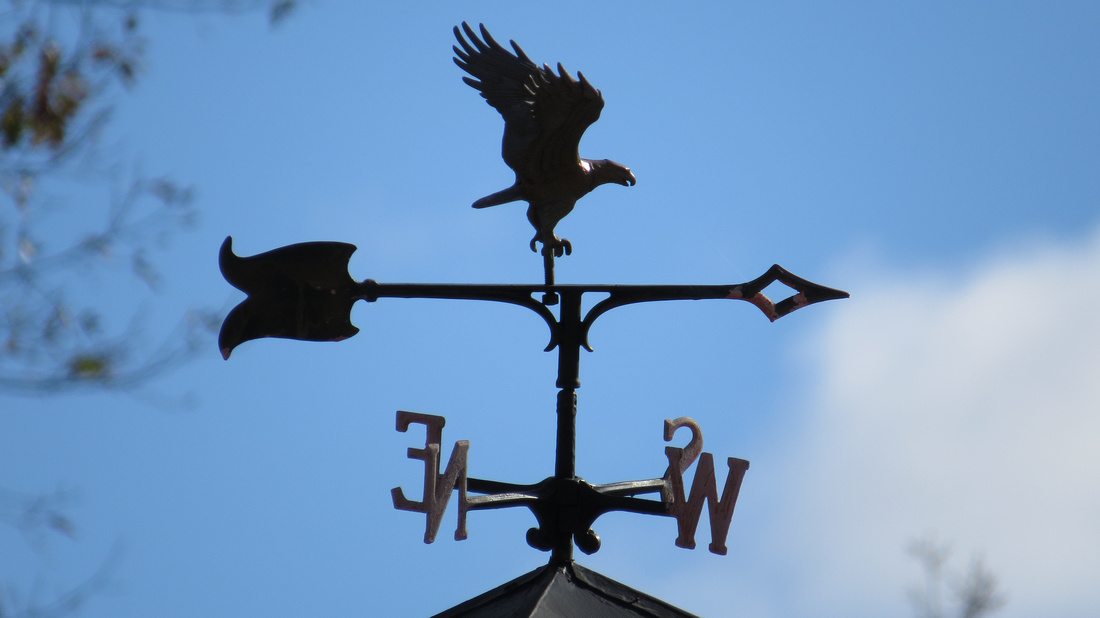 03_SX50_0028 1200mm SUPERFINETo return to the SX50 Review - Part 1, click the link
03_SX50_0028 1200mm SUPERFINETo return to the SX50 Review - Part 1, click the link
SX50_2400mm FINE - Tripod mounted from 100 feet:
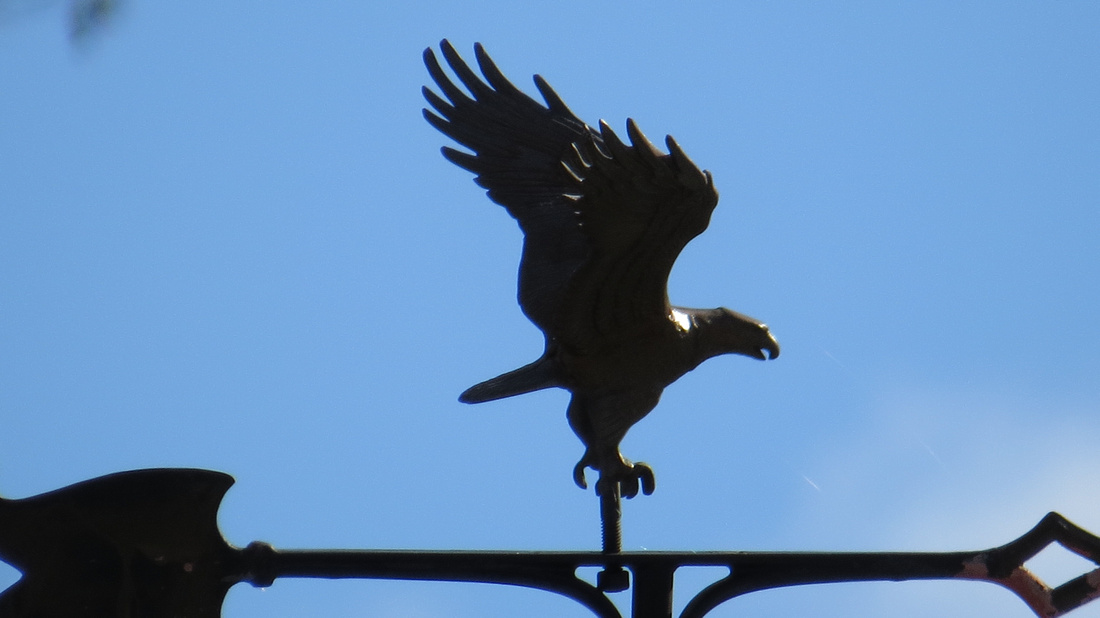 02_SX50_0027 2400mm FINETo return to the SX50 Review - Part 1, click the link
02_SX50_0027 2400mm FINETo return to the SX50 Review - Part 1, click the link
SX50_2400mm SUPERFINE - Tripod mounted from 100 feet:
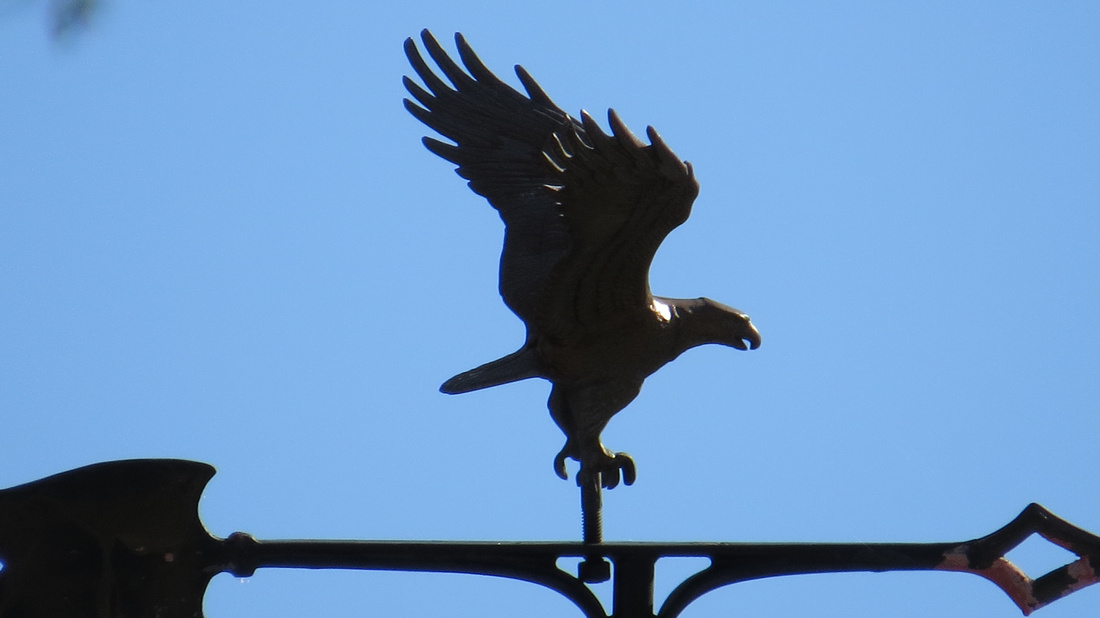 01_SX50_0026 2400mm SUPERFINETo return to the SX50 Review - Part 1, click the link
01_SX50_0026 2400mm SUPERFINETo return to the SX50 Review - Part 1, click the link
Telemacro:
One of the first things I wanted to know about the SX50 was how its telemacro "feature" compared to the SX40. In my mini-review of the SX40 I posted images showing that the SX40 could focus on an object 1¾ inches wide from 4½ feet away with its full optical zoom and 2.0TC (effective 1680mm lens in full frame equiv.). Here is a 1200mm image with additional 2.0TC with the SX50:
SX50 at 2400mm with 2.0TC from 4½ feet gives a horizontal field of view of 1 3/16 inches:
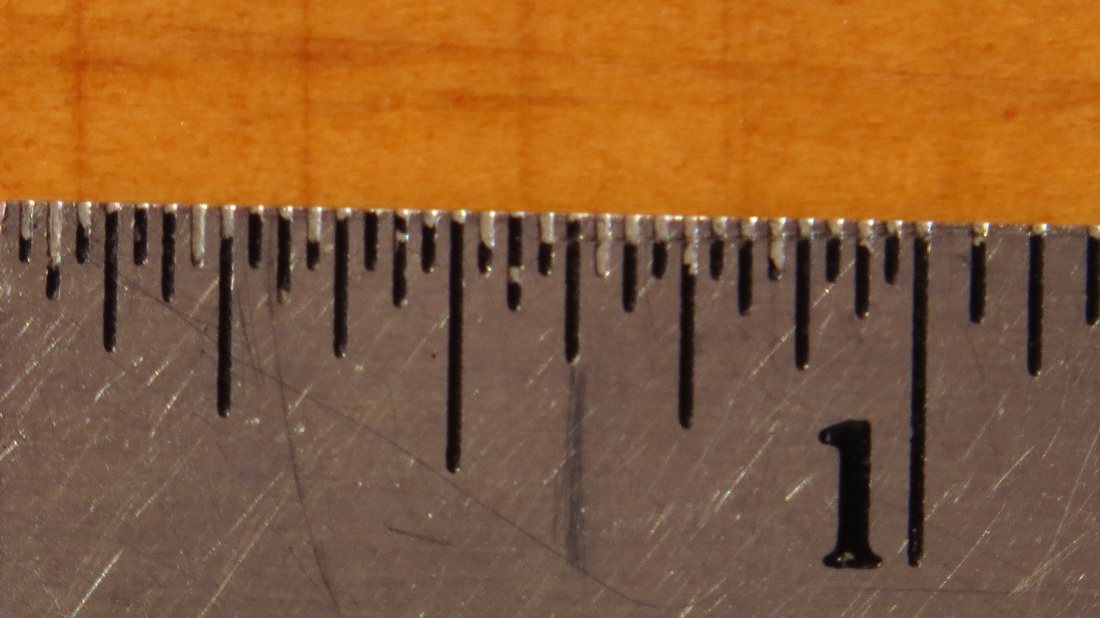 121029_0017 2400mm from 4½ feetTo return to the SX50 Review - Part 1, click the link
121029_0017 2400mm from 4½ feetTo return to the SX50 Review - Part 1, click the link
http://edwardmichaellach.zenfolio.com/blog/2016/4/canon-sx50-review---reprisal-of-an-article-i-wrote-on-dpreview-com-in-december-2012
So, a horizontal field of view of 1 3/16 inches can be captured at the minimum focus distance of 4½ feet with the SX50. Since many of the uncropped images I've posted here over the last 10 months have been of flora and fauna only an inch or two in size, I guess I'm going to get even closer to nature in the coming year. I'm looking forward to it. In addition, here is another close-up showing nice clarity of a back-lit fabric leave taken from about 10 feet at full optical zoom:
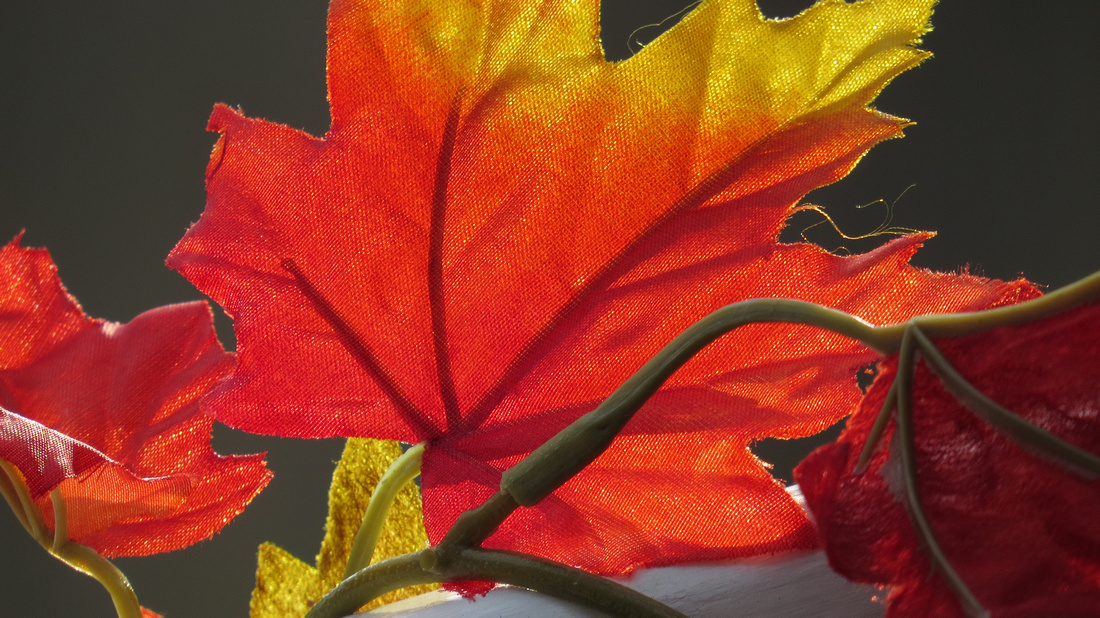 121108_0071_SX50 Backlit Fabric Leave TestTo return to the SX50 Review - Part 1, click the link
121108_0071_SX50 Backlit Fabric Leave TestTo return to the SX50 Review - Part 1, click the link
http://edwardmichaellach.zenfolio.com/blog/2016/4/canon-sx50-review---reprisal-of-an-article-i-wrote-on-dpreview-com-in-december-2012 SX50 at 1200mm optical zoom from about 10 feet shows the details of a back-lit fabric leaf.
SX50 at 1200mm optical zoom from about 10 feet shows the details of a back-lit fabric leaf.
Focus Speed and Zoom Assist:
Like most others have reported about the SX50, I also find that in medium to bright light that the focus speed and shot to shot handling has improved greatly from the SX40. Well done. HOWEVER, in side by side tests with the SX40 in dim to dark conditions, the SX40 has won every single time. In fact, sometimes I found the SX50 to be down right slow after the SX40 already obtained focus. Maybe it's just my unit, but I find this an interesting result. The speed of the zoom assist coupled with the faster focusing in bright to medium light really impresses me. The second zoom assist button also came in very handy to stabilize the 240mm zoom. With the SX40 I was not very good in tracking birds in flight. But the other day three hawks were circling my home hunting for a final meal in the setting sun. Although I knew I would only get silhouettes in the fading light, I grabbed my SX50 and set the 2.0TC. Using the Zoom Assist set to medium, I was excited as it was finally easy to zoom in and focus on the gliding birds who were flying high enough to half fill the frame at 2400mm. Four shots and four in focus hits . Also took a fifth shot as one came gliding down through the treetops. Although I erased the first four as just silhouettes and tests, I liked the composition of the last one and it showed that the camera responded right on time to capture the hawk as it hit the opening:
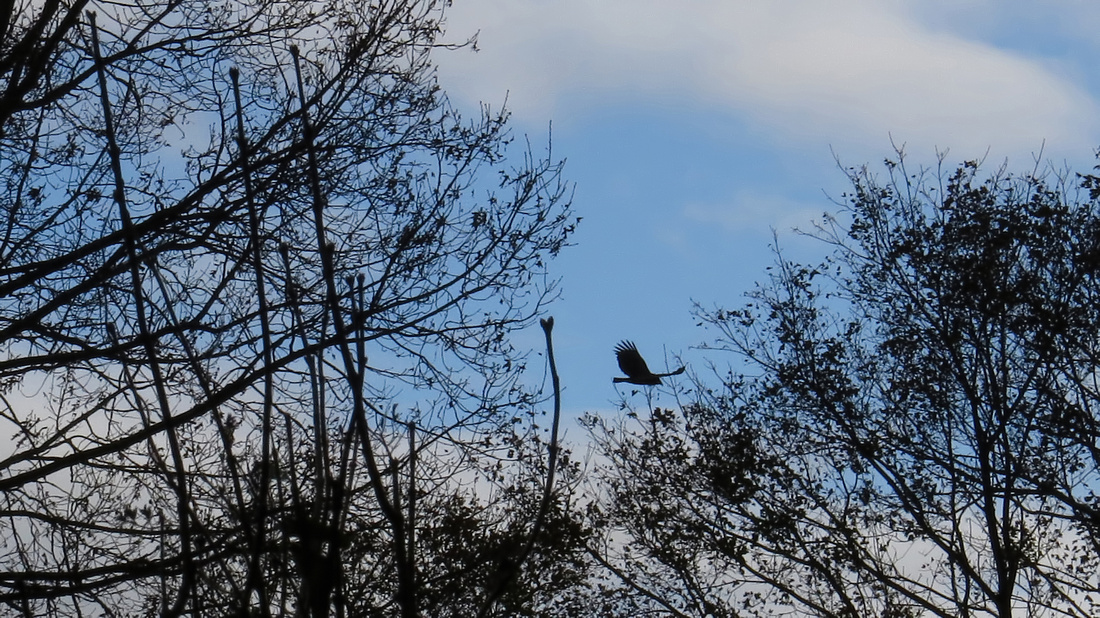 121104_0043_SX50 Hawk Hunting before SunsetTo return to the SX50 Review - Part 1, click the link
121104_0043_SX50 Hawk Hunting before SunsetTo return to the SX50 Review - Part 1, click the link
http://edwardmichaellach.zenfolio.com/blog/2016/4/canon-sx50-review---reprisal-of-an-article-i-wrote-on-dpreview-com-in-december-2012 Using Zoom Assist, I was able to track this hawk from about 200-300 feet high down through the treetops, zooming in and out, and was able to capture it just as it hit the opening, in focus no less.
Using Zoom Assist, I was able to track this hawk from about 200-300 feet high down through the treetops, zooming in and out, and was able to capture it just as it hit the opening, in focus no less.
Dynamic Range Correction and Landscapes:
I like highlight control on the Canon S100 and did not like shadow control on either the S100 or the SX40. In either case I felt the shadow control produced too blotchy and noisy a result for my taste and I would rather handle it in post. Since the SX50 now has both like the S100, I immediately set and liked the highlight control for brightly lit scenes. I then tested shadow control in auto one more time. I was surprised with what looked like better results than the other cameras. Now I did not yet push it to deeper shadows, but gave it easier targets to start. And it handled them quite well. The downside is that when both highlight and shadow is set, resulting images are very flat and need level or curve adjustment in post. But the added detail and dynamic range, at least so far, is worth it. Here are some landscape examples followed by descriptions:
 121108_0066_SX50 Emerging from the Nor'easterTo return to the SX50 Review - Part 1, click the link
121108_0066_SX50 Emerging from the Nor'easterTo return to the SX50 Review - Part 1, click the link
http://edwardmichaellach.zenfolio.com/blog/2016/4/canon-sx50-review---reprisal-of-an-article-i-wrote-on-dpreview-com-in-december-2012 Highlight control was used to retain the details in the white snow of the plant that survived Sandy and emerged from the snow. The original was a little too blue, so I added a 50% No. 85 filter in Photoshop and tweaked the highlight levels to 245.
Highlight control was used to retain the details in the white snow of the plant that survived Sandy and emerged from the snow. The original was a little too blue, so I added a 50% No. 85 filter in Photoshop and tweaked the highlight levels to 245.
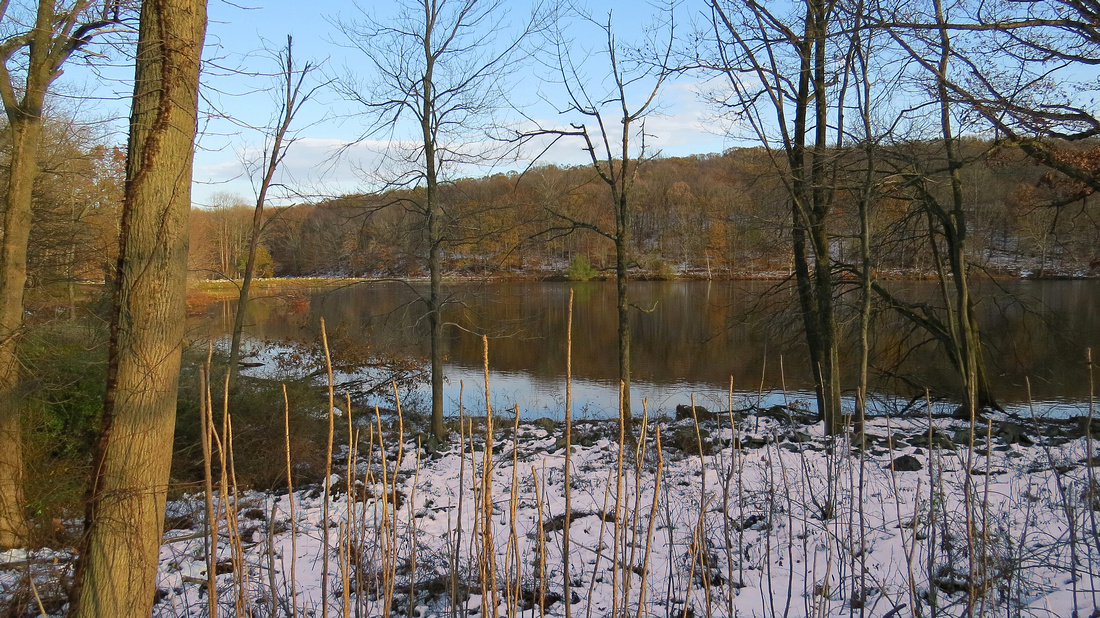 121109_0120_SX50 Swan Lake at Rockefeller PreserveTo return to the SX50 Review - Part 1, click the link
121109_0120_SX50 Swan Lake at Rockefeller PreserveTo return to the SX50 Review - Part 1, click the link
http://edwardmichaellach.zenfolio.com/blog/2016/4/canon-sx50-review---reprisal-of-an-article-i-wrote-on-dpreview-com-in-december-2012 I went down to Swan Lake at the Preserve to check how much damage the storms did. This landscape used both highlight and shadow control with the original image being very flat but full of detail. I created four layers (the snow, the sky, the mountain and its reflection, and the sky reflection in the lake) and enhanced each separately to create the final image. I think it was worth the trouble, given the good bones from the original.
I went down to Swan Lake at the Preserve to check how much damage the storms did. This landscape used both highlight and shadow control with the original image being very flat but full of detail. I created four layers (the snow, the sky, the mountain and its reflection, and the sky reflection in the lake) and enhanced each separately to create the final image. I think it was worth the trouble, given the good bones from the original.
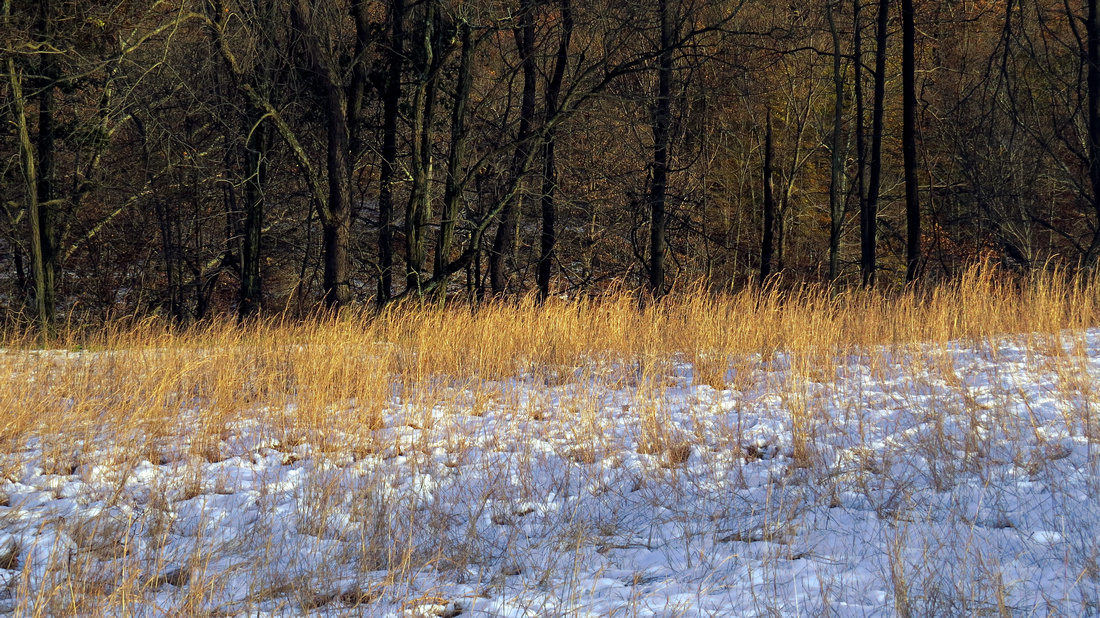 121109_0121_SX50 Rockefeller Preserve at SunsetTo return to the SX50 Review - Part 1, click the link
121109_0121_SX50 Rockefeller Preserve at SunsetTo return to the SX50 Review - Part 1, click the link
http://edwardmichaellach.zenfolio.com/blog/2016/4/canon-sx50-review---reprisal-of-an-article-i-wrote-on-dpreview-com-in-december-2012 This image from the Preserve was also taken with highlight and shadow control, adding detail and range to both the shadows and the snow. The flat results were also enhanced in Photoshop by adding separate levels adjustments to the snow, the luminance levels of the combined grasses and highlights in the woods, and the trees themselves.
This image from the Preserve was also taken with highlight and shadow control, adding detail and range to both the shadows and the snow. The flat results were also enhanced in Photoshop by adding separate levels adjustments to the snow, the luminance levels of the combined grasses and highlights in the woods, and the trees themselves.
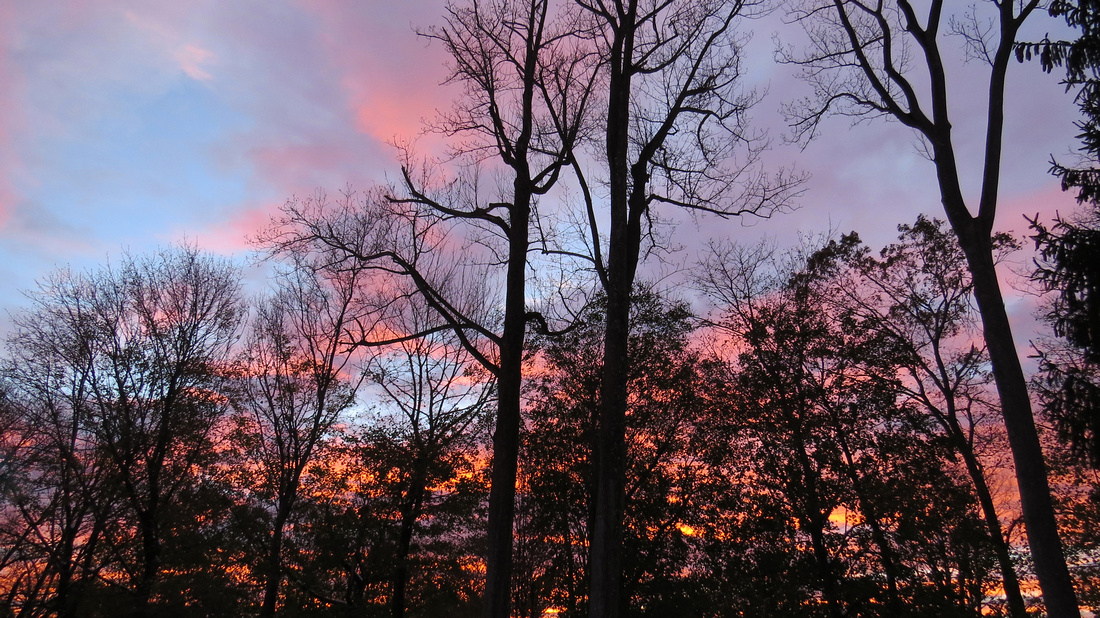 121108_0082_SX50 Autumn SunsetTo return to the SX50 Review - Part 1, click the link
121108_0082_SX50 Autumn SunsetTo return to the SX50 Review - Part 1, click the link
http://edwardmichaellach.zenfolio.com/blog/2016/4/canon-sx50-review---reprisal-of-an-article-i-wrote-on-dpreview-com-in-december-2012 This image, taken from my kitchen window the evening after the nor'easter, had auto highlight control turned on to maintain details around the bright highlights. Its only post was the removal of the edge of a roof eave in the lower left side. The image itself was certainly bright and colorful enough to need no other post. And I just love sunsets from the comfort of my window.
This image, taken from my kitchen window the evening after the nor'easter, had auto highlight control turned on to maintain details around the bright highlights. Its only post was the removal of the edge of a roof eave in the lower left side. The image itself was certainly bright and colorful enough to need no other post. And I just love sunsets from the comfort of my window.
Flash:
It took some testing, but I finally was able to set the C1 mode of my SX50 with usable flash settings for 2 foot to 12 foot subject distances. First thing that I noticed is that setting white balance to AWB works better than setting it to Flash. Also that an FEC of -1/3 to -2/3 coupled with an EC of -1/3 also tended to give better results. With the SX40 I usually attached a Canon Speedlight for best results, but I wanted the convenience of not having to do so with the SX50. I'll still do that comparison, internal vs speedlight, but at a later time with the SX50. Here are some flash examples, first at close distance and then a wider field. The vine tomato was from about 2½ feet and results are pleasing to me. The kitchen utility area image shows the effects of different lightings in the room which was not corrected by the DIGIC5 processor (see the green on the near cabinets from the fluorescent lights in the family area of the room and the red highlights from the overhead halogens). I've read that the DIGIC5 will automatically correct these differences in AWB under some circumstances, but apparently not when using Flash. By the way, the kitchen was a gift to my wife when I retired. I've been a photographer, worked in high finance and technology and various other fields, but I have always been first and foremost a carpenter. I custom designed and personally hand built the entire kitchen for her, using handpicked red oak timbers and age old techniques and joinery. I proudly tell people that, except for the wall studs and attaching my crown mouldings, there is not a single nail used in the entire kitchen (you're only seeing about a third of it). I do love photography, but designing and building cabinetry and furniture is where my head is really at. But I digress. Back to the pictures:
 121108_0109_SX50 Flash Study on the VineTo return to the SX50 Review - Part 1, click the link
121108_0109_SX50 Flash Study on the VineTo return to the SX50 Review - Part 1, click the link
http://edwardmichaellach.zenfolio.com/blog/2016/4/canon-sx50-review---reprisal-of-an-article-i-wrote-on-dpreview-com-in-december-2012 Vine tomato study with the onboard flash of the SX50 from about 2½ feet.
Vine tomato study with the onboard flash of the SX50 from about 2½ feet.
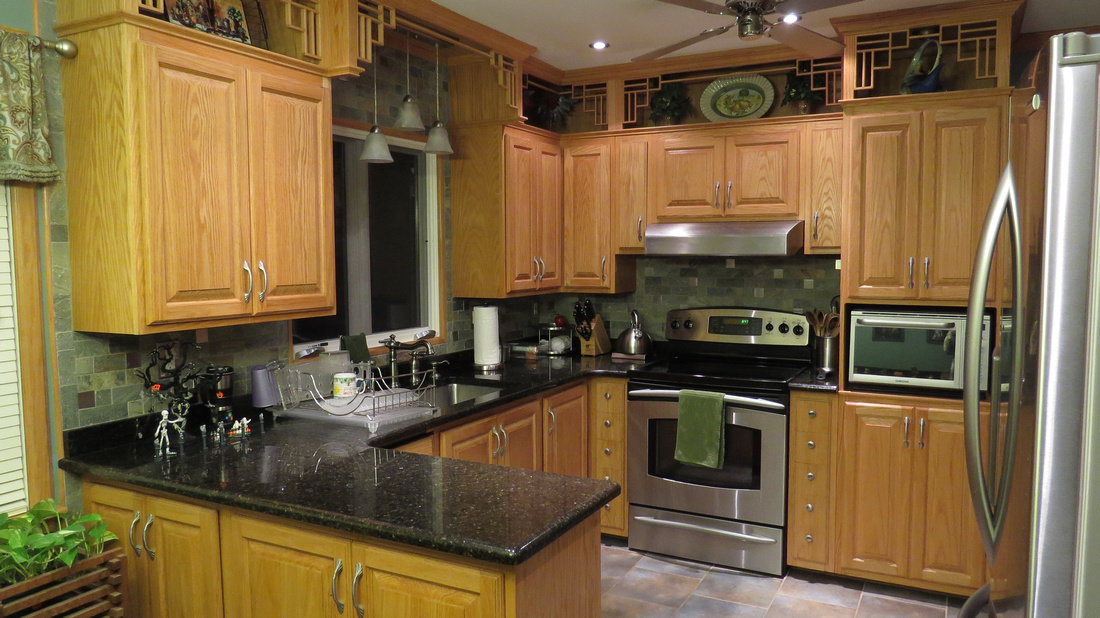 121108_0116_SX50 Wide Field Flash TestTo return to the SX50 Review - Part 1, click the link
121108_0116_SX50 Wide Field Flash TestTo return to the SX50 Review - Part 1, click the link
http://edwardmichaellach.zenfolio.com/blog/2016/4/canon-sx50-review---reprisal-of-an-article-i-wrote-on-dpreview-com-in-december-2012 The DIGIC5 did not correct for the multiple light sources in this SX50 onboard flash kitchen image. AWB however did a much better job than the Flash White Balance setting did. Overall, the flash did do a very nice job of lighting this wide image without all the room's lights turned on.
The DIGIC5 did not correct for the multiple light sources in this SX50 onboard flash kitchen image. AWB however did a much better job than the Flash White Balance setting did. Overall, the flash did do a very nice job of lighting this wide image without all the room's lights turned on.
The Bottom Line (so far):
Except for the cupola pictures above, I haven't posted anything here showing the strength of the SX50's massive zoom with its tremendous wide range. Since many have already celebrated it here, that's basically a done deal. But I will in future parts of this Review. Here I wanted to give some initial observations of other facets of this very versatile camera. And after two weeks of use, the bottom line is that it is definitely a keeper. It has enough new features to differentiate it from its older sibling and yet still feels comfortably similar. Image quality appears to have improved, slight as it may be with the superfine setting, and dynamic range can be helped with the combined highlight/shadow settings (again, with help in post). And I can't wait to start aiming its 2400mm (2.0TC) lens at nature's tinier offerings from 4½ feet.
Addendum to SX50 Review Part 1 from comments in its discussion:
The 12 main new features of the SX50 compared to the SX40 were not included in the original article, but we compiled them in the comments:
1200mm zoom, of course
Superfine jpegs
Faster focus and handling
Better LCD
Raw files
Larger view in EVF with sharper text
DRC for high contrast lighting situations
Electronic level (I really like this one)
FAL for the long end of the zoom handheld
Slightly faster zoom assist (or so it seems to me)
Better, surer hand grip to steady the camera handheld
Silent motors for video zooming and focusing
Dale brought up a number of items. People basically agree that the SX50 handles and focuses much faster than the SX40 in bright light, but Dale and I both did tests on their focus speed comparison in very low light. There were interesting results. For white or gray objects, focus speed was slow but about even. But objects with colors had different results with the SX50 faster or SX40 faster dependent on those colors. Dale noticed that the focus assist light colors of the two cameras are different, possibly leading to these results. While doing these tests, Dale also noticed that the EVF on the SX50 appears noticeably larger with the text easier to read on the newer camera. It appeared to me that eye relief was also a bit longer, as the bezel does not smudge my glasses like the SX40's does.
I hadn't paid attention to the new grip until Dale mentioned it. It's actually much surer in your hand with less chance of accidently having the camera slip from your grasp. Plus there's an added bonus of making the camera much steadier in preventing vertical shake when hand holding the long zoom.
Mario started a discussion about the Focus Assist Lock (FAL). After a number of tests, I believe people agree that while a pretty neat tool for stabilizing the viewfinder, there is probably little or no effect on the actual image for still photography. We did not discuss video. And this gives me one more chance to rant a little about its placement. When I grab the camera, my left thumb naturally hits the FAL. I worry that not noticing and hitting another button (e.g. ON/OFF) at the same time may have unwanted effects.
CaptainEJR noticed the purple fringing in the comparison photos. It does appear that it can be pronounced on the SX50 for high contrast edges in very bright light, but gets much better when luminance levels go down a little.
And in answer to a post from Beach Bum, we discussed the light path in the long zoom lens and it's f-stop transitions. The SX50's widest aperture of f5.6 at 840mm is actually slightly faster than the SX40's widest aperture of f5.8 at 840mm, the SX40's longest focal length in Full Frame equivalent terms. Due to the motorized zoom, it is hard to get a consistent reading between 975mm and 1025mm of where the SX50's widest aperture drops to f6.5. This chart shows at what focal lengths the widest aperture steps down for the SX50:
Focal Length (Full Frame equivalent) - F-stop Transition
4.3 mm (24mm) - f3.4
4.5mm (25mm) - f3.5
6.3mm (35mm) - f4.0
10.1mm (55mm) - f4.5
15.2mm (85mm) - f5.0
33.8mm (190mm) - f5.6
Somewhere between 174.7mm (975mm) and 183.6mm (1025mm) - f6.5 .
For Galleries of images on this website taken with the cameras reviewed in this article, use these links to open them in a separate Tab on your Browser:
Canon Powershot SX50: http://edwardmichaellach.zenfolio.com/p949383169
Canon Powershot SX40: http://edwardmichaellach.zenfolio.com/p1016990742
Stay tuned as Part 2 of this review, SX50 vs SX40 - Head to Head in the 24mm to 100 mm Zoom Range, will be published soon.
